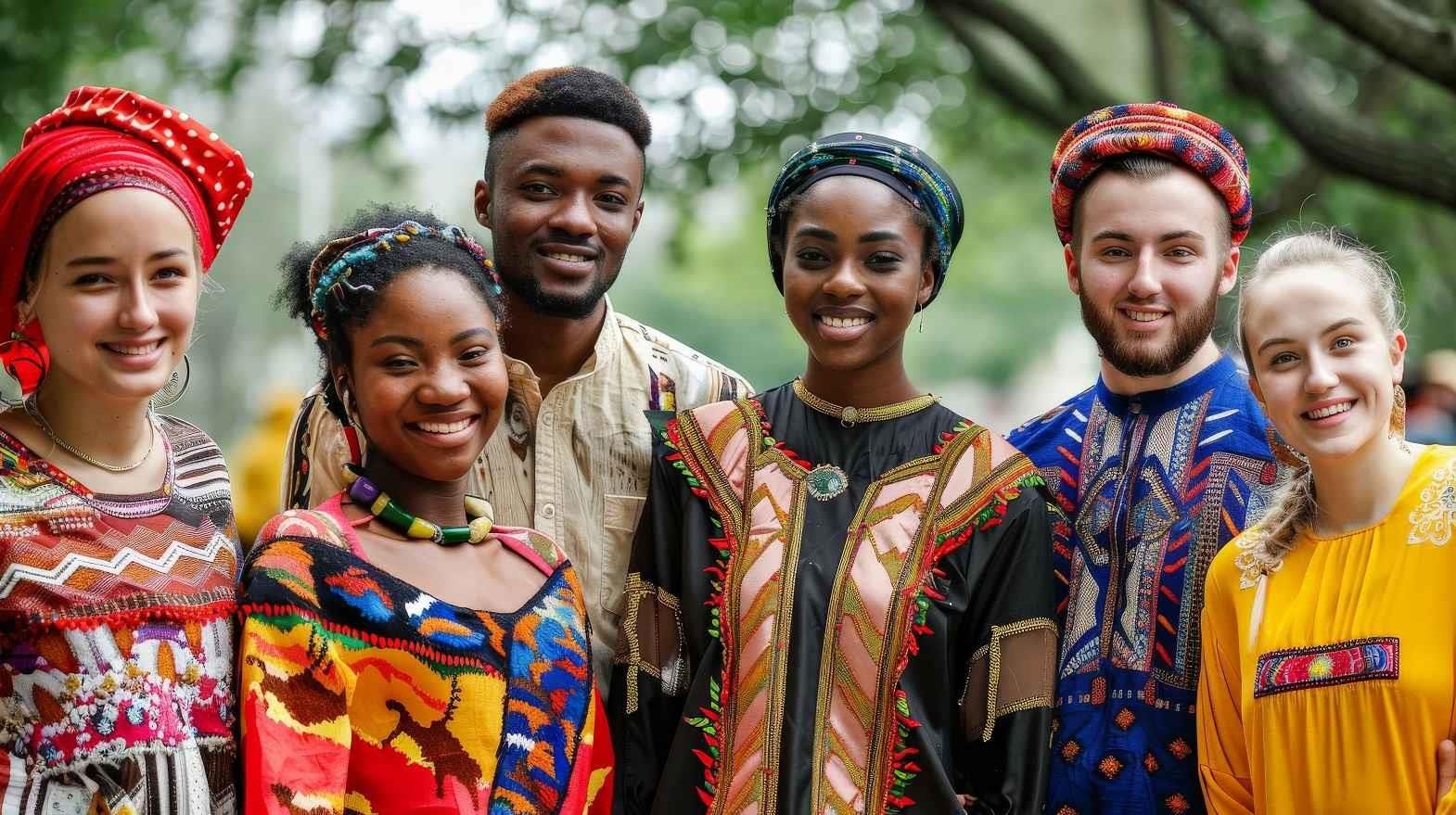Colour plays a crucial role in shaping perceptions and emotions, particularly in the world of fashion branding. Whether consciously or not, colours influence decisions, evoke emotions, and create lasting impressions. For fashion brands, understanding the psychology of colour can be a powerful tool in building a strong brand identity, forming emotional connections with customers, and driving sales. This article explores the psychology behind different colours, their impact on fashion branding, and how to use them effectively.
The Importance of Colour in Fashion Branding
Colour is often the first thing noticed when encountering a brand, forming a visual language that conveys its message, values, and personality. In the highly competitive fashion industry, where first impressions are vital, the right choice of colour can set a brand apart from its competitors and resonate with its target audience.
Fashion brands use colour strategically in several ways:
Creating Brand Identity: Colour plays a pivotal role in establishing a brand’s identity and helping it stand out in a crowded market. By consistently using a specific colour or palette, a brand creates strong visual associations, making it instantly recognisable. For example, Tiffany & Co.’s signature robin’s egg blue has become synonymous with luxury and sophistication. This distinct colour choice sets the brand apart from other jewellery companies and is integral to its identity.
Evoking Emotions: Different colours trigger specific emotions in people. Fashion brands can leverage this by selecting colours that align with the emotional responses they want to elicit from their customers. For instance, a brand aiming to convey calmness and relaxation may choose shades of blue, while one seeking to generate excitement and energy might opt for bold reds. By carefully selecting colours that resonate with their target audience’s emotions, brands can create deeper connections with their customers.
Influencing Purchasing Decisions: Colours used in branding and product presentation can significantly impact consumer behaviour. Certain colours can evoke specific responses that influence purchasing decisions. For example, red often creates a sense of urgency, encouraging quick decisions and impulse buying, while blue and green are associated with trust and reliability, making customers more comfortable in making purchases. By understanding how colours affect consumer psychology, brands can strategically guide customers towards making a purchase.
Building Brand Loyalty: Consistent use of colour across branding materials—from logos and packaging to marketing campaigns and store designs—creates a unified and recognisable brand experience. When customers repeatedly encounter the same colours, it reinforces the brand’s image and makes it more memorable. For instance, Zara’s monochromatic logo and its association with warm colours like beige, ivory, and cream create a cohesive brand identity. Over time, this consistency fosters trust and familiarity, encouraging repeat business. A strong colour identity becomes a key factor in building long-term loyalty, as customers associate those colours with positive experiences and quality products.
By understanding and applying the psychology of colour effectively, fashion brands can create a powerful, memorable presence that resonates with their audience and drives success.
The Psychology of Specific Colours
Each colour carries its own psychological significance and can evoke different emotions and responses. In fashion branding, colours are used strategically to communicate a brand’s values, evoke feelings, and shape customer perceptions. Let’s explore the psychological impact of some commonly used colours in fashion branding and how they are applied.
Red
Psychological Impact: Red is powerful and attention-grabbing, often associated with energy, passion, excitement, and urgency. It can also evoke feelings of love, desire, and even aggression.
Branding Use: Fashion brands use red to create excitement and draw attention to their products. It is frequently used in sales promotions or to highlight limited-time offers. Luxury brands like Valentino and Christian Louboutin use red to convey passion, luxury, and exclusivity.
Blue
Psychological Impact: Blue evokes calmness and serenity, associated with trust, reliability, and professionalism. It can make people feel secure and loyal.
Branding Use: Many fashion brands, such as Tommy Hilfiger and Levi’s, use blue to convey dependability and timelessness. It is particularly favoured by brands that want to appear classic and trustworthy.
Yellow
Psychological Impact: Yellow is bright, cheerful, and energising, often linked to happiness, optimism, and creativity. However, excessive use of yellow can be overwhelming.
Branding Use: Brands like Forever 21 and H&M use yellow to evoke playfulness and youthfulness, making it appealing to younger audiences and promoting a casual, fun image.
Black
Psychological Impact: Black is sophisticated, elegant, and powerful, symbolising luxury, authority, and formality. It can also evoke feelings of mystery and exclusivity.
Branding Use: High-end fashion brands like Chanel, Gucci, and Prada frequently use black to emphasise elegance, sophistication, and exclusivity. Black is also popular in minimalist branding for its sleek and modern appearance.
Green
Psychological Impact: Green is associated with nature, growth, and health, evoking feelings of tranquillity, balance, and harmony. It can also symbolise wealth and prosperity.
Branding Use: Brands like Patagonia and The North Face, which focus on sustainability and eco-friendliness, use green to reflect their environmental commitment and connection to nature.
Purple
Psychological Impact: Purple represents royalty, luxury, and creativity, evoking sophistication, mystery, and spirituality. It can also symbolise innovation and uniqueness.
Branding Use: Purple is often used by brands like Versace and Alexander McQueen to emphasise luxury, artistry, and exclusivity, appealing to creative and imaginative audiences.
White
Psychological Impact: White is associated with purity, simplicity, and cleanliness, evoking feelings of calmness, freshness, and innocence. It can also symbolise new beginnings.
Branding Use: White is popular in minimalist fashion branding, often used by brands like Calvin Klein and Dior to create a sense of purity, simplicity, and sophistication.
Combining Colours for Impact
While individual colours have specific psychological impacts, combining colours can create more dynamic and compelling brand images. Here are some effective ways to use colour combinations in fashion branding:
Complementary Colours: These are opposite each other on the colour wheel, like blue and orange or red and green. When paired together, complementary colours create a vibrant, high-contrast look that naturally draws attention. Brands seeking to make a bold statement often use this strategy. For example, a blue background with orange accents can highlight key elements and ensure they stand out.
Analogous Colours: These are next to each other on the colour wheel, like blue and green or red and orange. Analogous colour schemes are pleasing to the eye and create a harmonious look, often inspired by nature. Brands aiming to convey calmness, unity, or consistency might use analogous schemes. For example, a brand focused on nature-inspired products could use various shades of green and blue to create a serene and cohesive image.
Monochromatic Colours: This scheme uses different shades, tints, and tones of a single colour. It creates a sophisticated, elegant, and minimalist look, ideal for brands that want to project simplicity and refinement. For instance, a fashion brand might use varying shades of grey or navy for a clean, modern aesthetic. Monochromatic schemes are versatile, allowing brands to maintain a cohesive identity while offering visual variety.
Triadic Colours: A triadic scheme uses three colours evenly spaced on the colour wheel, such as red, yellow, and blue. This creates a balanced yet vibrant look, offering both contrast and harmony. Brands wanting to project creativity, energy, and diversity might use triadic schemes to add vibrancy and visual interest to their branding, appealing to a wide and varied audience.
By understanding the psychology behind colours and using them strategically, fashion brands can create compelling visual identities that resonate with consumers and drive engagement.
Cultural Considerations
In fashion branding, it is essential to recognise that the meanings and associations of colours can vary significantly across different cultures. What a colour represents in one culture may have a completely different meaning in another. For fashion brands with a global presence, being mindful of these cultural differences is crucial to ensure that their colour choices resonate positively with diverse audiences.
White: In many Western cultures, white is associated with purity, innocence, and new beginnings. It is commonly used in weddings to symbolise the purity and fresh start of marriage. However, in some Eastern cultures, particularly in parts of China and India, white is associated with mourning and death. It represents the afterlife and is often worn during periods of grief. A fashion brand that uses white prominently must consider these cultural differences when marketing to an international audience to ensure the colour’s meaning aligns with the cultural context.
Red: Red carries strong and varied cultural significance. In many Western cultures, red is linked to love, passion, and excitement. It grabs attention and is frequently used in marketing to create urgency or highlight sales. In Chinese culture, red symbolises luck, prosperity, and happiness and is widely used in celebrations like weddings and the Lunar New Year. However, in some Middle Eastern cultures, red may be associated with danger or caution. For global fashion brands, understanding these cultural nuances is key to using red effectively and appropriately across different regions.
Black: In Western cultures, black is commonly associated with sophistication, elegance, and formality. It is a staple colour in fashion, particularly in luxury branding, where it conveys exclusivity and timelessness. However, black is also linked to mourning and death in many cultures, including Western ones. In some African cultures, black may be used in rituals related to death and the afterlife. Brands that frequently incorporate black into their branding should be aware of these associations and consider how the colour might be interpreted in various cultural contexts.
Yellow: Yellow is often associated with happiness, positivity, and energy in Western cultures. It evokes warmth and optimism. However, in Asian cultures, yellow’s meaning can differ. In China, yellow was historically linked to the emperor and royalty, symbolising power and prosperity. In some contexts, yellow may also be associated with caution or deceit. In parts of Africa, yellow is connected to wealth and status due to its similarity to gold. A fashion brand using yellow must take into account these diverse interpretations to avoid conveying unintended messages.
For fashion brands, understanding the cultural significance of colours goes beyond avoiding misunderstandings—it is also an opportunity to forge deeper connections with local audiences. By considering how colours are perceived in different cultures, brands can tailor their marketing strategies to ensure their message is communicated effectively and respectfully across the globe. This cultural sensitivity can help build stronger relationships with customers and enhance the brand’s reputation in international markets.
Conclusion
Colour is a powerful tool in fashion branding that influences perceptions, evokes emotions, and drives purchasing decisions. By understanding the psychology of colours and using them strategically, fashion brands can create a strong and memorable brand identity that resonates with their target audience. Whether it is the passion of red, the trustworthiness of blue, or the luxury of black, the right colour choice is essential in building a successful fashion brand.









Comments